How 1G SFP Modules Ensure Legacy Network Compatibility
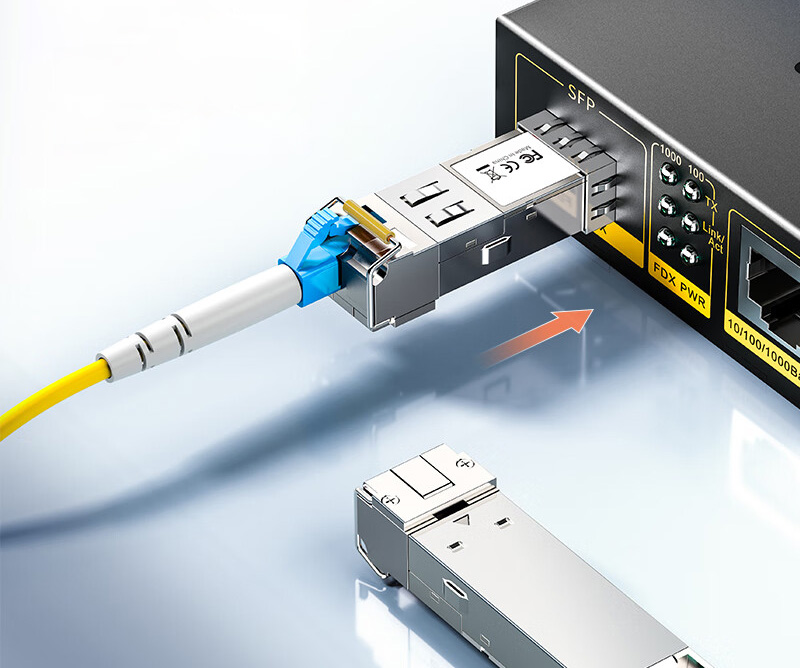
1G SFP modules are essential in connecting older network systems (including fiber optic and copper Ethernet) with the latest infrastructure upgrades. They facilitate upgrades without undertaking a complete overhaul of an entire platform or changing existing investments while improving connectivity. Finding an appropriate 1G SFP module guarantees reliable communications and allows hardware compatibility between diverse devices and applications, which is critical to maintaining a stable and long-lasting network.
Realizing how to select and pair 1G SFP modules with the network requirements can avoid mismatched and costly configurations that affect performance. From technical specs to operational deployment, the integration of these modules facilitates seamless transitions and also builds a future-proof environment. Use the exclusive case studies and expert solutions as proven contexts for why 1G SFP modules will always provide convenience and comfort in the case of network upgrades when maintenance and affordability are both important.
What is a 1G SFP Module? Definition and Key Technical Parameters
The term SFP (Small Form-Factor Pluggable) refers to a technology used to connect a fiber network switch or router to either fiber optic cables or copper cabling. The SFP is often referred to as a transceiver and is used to transceive electrical signals from the network switch and convert those signals to optical signals for fiber cables or vice versa if copper cabling is being used. This flexibility is necessary in environments that require reliable gigabit-speed connectivity without needing to swap out the entire switch or router.
There are two types of 1G SFP available: fiber optic and copper. Fiber optic SFPs transmit data over strands of glass or plastic at different wavelengths. Fiber optic SFPs can transmit longer distances than copper (and are impervious to electromagnetic interference). Copper 1G SFPs are also known as 1G copper SFPs and utilize twisted-pair cabling such as Cat5e or Cat6.
Copper SFP connections are recommended for shorter distances (such as installing SFPs in racks or closets with short post-termination connections). Each system will depend greatly on distance, cost, and environmental factors.
There are several key parameters used to describe the performance of a 1G SFP module:
- Data Rate: A 1G SFP data rate is fixed at 1 gigabit per second, which is the standard for gigabit Ethernet.
- Wavelength: Fiber optic SFP modules operate on specific wavelengths, such as a short-range, 850 nm SFP (SX) or a long-range 1310 nm SFP (LX). Copper SFP modules present no wavelength issue since they transmit electrical signals.
- Transmission Distance: The transmission distance for multimode fiber SFPs can reach up to 550 meters, while the distance for single-mode fiber can be 10 kilometers or more. Copper SFP distance typically will not exceed 100 meters.
- DDM/DOM (Digital Diagnostic Monitoring): Many 1G SFP transceivers have DDM or DOM capability. This provides the ability to monitor traces of real-time programmable information such as temperature, voltage, and optical power and allows network reliability by giving users advanced notice of faults.
In summary, a 1G SFP transceiver can address a range of customer needs, from lower-cost install base applications covering short distances to long-distance optical connections providing the highest reliability. Ensuring that the proper 1G SFP module is selected based on these important technical specifications will ensure that the legacy network is properly supported while improving its performance.
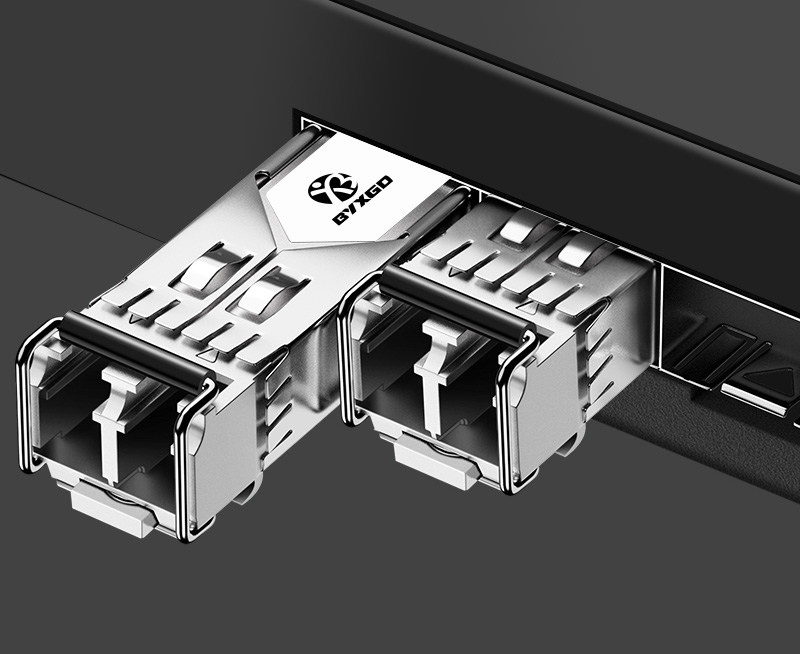
What are the Differences Among 1000BASE Standards: SX, LX, and T?
The 1000BASE standards—SX, LX, and T—each have individual requirements for networking. They specify different types of cables and distances to transmit successfully, which determines each module’s capability to be considered a 1G SFP. The difference matters to ensure the network can utilize or get the best performance out of the 1G SFP modules.
1000BASE-SX is used with multimode fiber and transmits at an 850 nm wavelength. It performs best for shorter distances (usually up to 550 meters), making it the best option of the three 1G SFP modules when devices are closely connected to one another on a campus network or within an establishment (data center or building). A common module to use, SFP1G SX 85, utilizes the SX standard while providing reliability for short-distance performance and being economical compared to other options.
1000BASE-LX uses single-mode fiber and transmits at a 1310 nm wavelength. This allows for much longer distances of operation (up to 10 km or more). In most cases, the LX module is used between offices on a campus or in an area of the city when a campus is enclosed around a metropolitan area to connect multiple offices together and link devices that are separated by distance but still under the same service.
The LX standard finds a balance between speed and distance without degrading transmission quality. 1000BASE-T operates on standard copper cables such as Cat5e or Cat6, with a maximum distance of 100 meters.
One of the significant advantages of using this standard is its low cost (overall system cost) and compatibility with copper wires. Because of this cost-effectiveness and simplicity for copper cable builds, it is often the standard choice for office environments or build-outs where fiber optics is impractical to use.
To simplify:
| Standard | Medium | Wavelength | Max Distance | Typical Use Case |
| 1000BASE-SX | Multimode Fiber | 850 nm | ~550 meters | Short-distance LAN links |
| 1000BASE-LX | Single-mode Fiber | 1310 nm | 10+ kilometers | Campus/metropolitan links |
| 1000BASE-T | Copper Cable | N/A | 100 meters | Office wiring, short runs |
Using the proper 1000BASE standard creates enhanced opportunities for the overall design of your network. The 1000BASE-SX standard suits a short, inexpensive link distance, while the 1000BASE-LX standard addresses a longer distance. The 1000BASE-T standard works for copper-based networks. Variants such as SFP1G SX 85 focus and help narrow these standards, and they create backward functionality for older, legacy networks, working for those who made the switch or made the 1000BASE standards optional.
How to Choose the Right 1G SFP Module for Your Network
Optimal 1G SFP module selection focuses on key factors that influence transmission reliability and compatibility. Distance is typically the first consideration. When it comes to distances within a building, copper 1G SFP modules and 1000BASE-SX fiber modules fit the bill nicely. For longer distances, 1000BASE-LX and other single-mode fiber options are in order for retaining signal quality over longer distances, but they are not always 100% necessary.
You should also consider the type of transmission medium because copper SFPs connect through twisted-pair cabling, which makes installation simple and pricing lower, but they have a distance limitation of about 100 meters. Fiber optic modules have much greater distance flexibility and resistance to EMI (electromagnetic interference) but require additional fiber optic cabling infrastructure, which can complicate both installation and pricing.
You should also consider the environmental condition because the environment may affect the reliability of the SFP module. If the environment is harsh or noisy, fiber optic 1G SFPs may be more effective than copper 1G SFPs because electrical noise can cause earlier failures in the connection than would be acceptable.
Finally, you must also make sure that SFP modules are compatible with network devices. Most devices that are SFP or SFP+ port compatible will accept either type of module, but it is important to verify compatibility before trying to mix SFP and SFP+ modules to avoid connection failure or speed issues down the line. This can be done through an online vendor list or through manual readings.
Of the 1G SFP transceivers, the GLC-TE SFP is a great option as it connects to copper up to 100 meters and supports wide compatibility with nearly all leading brands. It is a great option for reliability and deployment if the opportunity presents itself or if legacy compatibility options are weighed to upgrade a network.
In conclusion, when making 1G SFP module selections, you should consider the required transmission distance, the medium: fiber vs. copper, relevant environmental conditions, and device port compatibility (SFP vs. SFP+). Proper and thoughtful consideration of 1G SFP module selections can allow for minimal disruptions and help maximize the longevity of a network connection and related upgrades to legacy options.
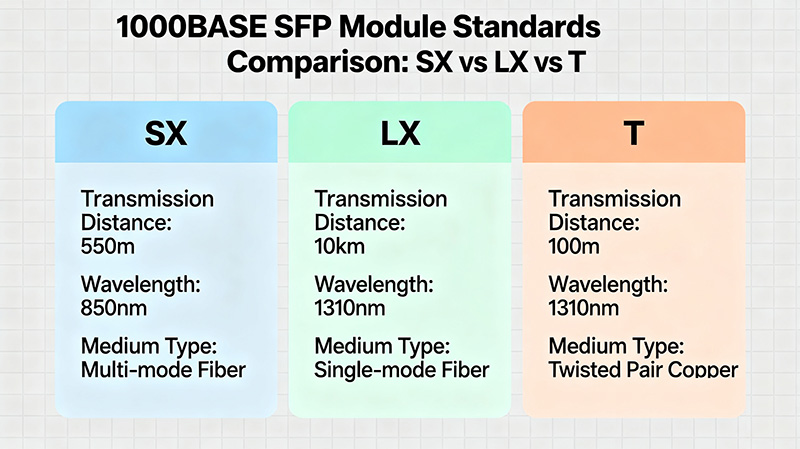
How to Deploy and Troubleshoot 1G SFP Modules for Seamless Integration
Effortlessly deploying 1G SFP modules depends on action steps. As the first point of action, make sure that the device is powered down to avoid potential damage. After the SFP module has been inserted into its respective SFP port and has clicked into place, power the device back up. After the device is powered back on, check to see if the corresponding device can recognize the SFP module.
If the device is able to recognize the SFP module, then you know the module has been deployed correctly. There can be some common issues with the deployment process, especially during installation. Typically, issues are caused either by the in-detectability of the SFP module because it isn’t compatible with the device or because the module being installed has dirty or filthy connectors.
The first action is to verify that the module installed matches the device for which it was intended, and the second action is to separate the connectors (clean gently) and then reseat the module so that it sits firmly in the intended port. We normally see mismatched errors when modules are inserted due to mixing standards (for example, inserting a copper SFP module into a fiber port). Verify that the ports match before proceeding to implement connectors.
In addition, utilizing Digital Diagnostic Monitoring (DDM) will greatly enhance oversight of the network and the modules used, during the deployment process and throughout the cycle of use. Utilizing DDM allows for real-time feedback on the temperature of the components, voltage, optical output, and receive power. Providing clear observability allows for the identification of possible faults prior to an outage or service disruption.
For example, if an abnormal increase in temperature is observed, troubleshooting can be employed prior to equipment failure. In short, deploying successful networks should be manageable by referencing the following actions:
- Power down the device before insertion of the module
- Match the ports with the module
- Clean connectors to prevent the loss of signal
- Utilize DDM to continue to monitor SFP modules as part of the installed network.
Utilizing these processes will reduce the amount of downtime and contribute to legacy networks that are reliable.
What Are the Real-World Use Cases and Benefits of 1G SFP Modules?
1G SFP modules are very important in many settings like enterprise offices, data centers, and industrial environments. Enterprise office networks use them to upgrade to newer technology while adding interconnections to old hardware without tearing out and replacing old switches. Data center networks use SFPs to maintain the flexibility of their links between servers and storage while managing cost and speed.
Industrial environments need them to mitigate electromagnetic interference so that communication can continue during processes in very noisy environments. These modules are extremely cost-effective because they enable upgrades to the network that utilize the existing cabling and hardware. By upgrading to a 1G SFP instead of replacing your legacy switches, you avoid upgrading to new hardware and save capital improvements on your budget.
It makes your network more flexible, too! Your network topology can easily change to add a new technology or user to your network without having to deal with rewiring your office, warehouse, or data center. In this day and age, legacy equipment can keep on going even if you use the newest technology by purchasing a compatible 1G SFP.
You can also prolong your investment with limited obsolescence or depreciation of that technology. Even with the rapid advancement of faster optics, such as 10G and 40G, 1G SFP modules are still a key feature of this technology.
In many applications, ultra-high bandwidth is not necessary, and 1G modules provide a practical and efficient optical solution. They also provide a reliable fallback when higher-speed optics are not available or needed. Since 1G SFP modules are interoperable, they will function correctly in mixed-vendor networks and are an established foundation for compatibility and stability in the network.
The key features of 1G SFP modules are:
- Cost savings through increasing the legacy portion of the network
- Improved flexibility as the network evolves
- Maximizing the life of an optical module by leveraging backward compatibility
All of these factors contribute to the ongoing use of 1G SFP modules as essential network ecosystem components. These components facilitate network efficiency and reliability.
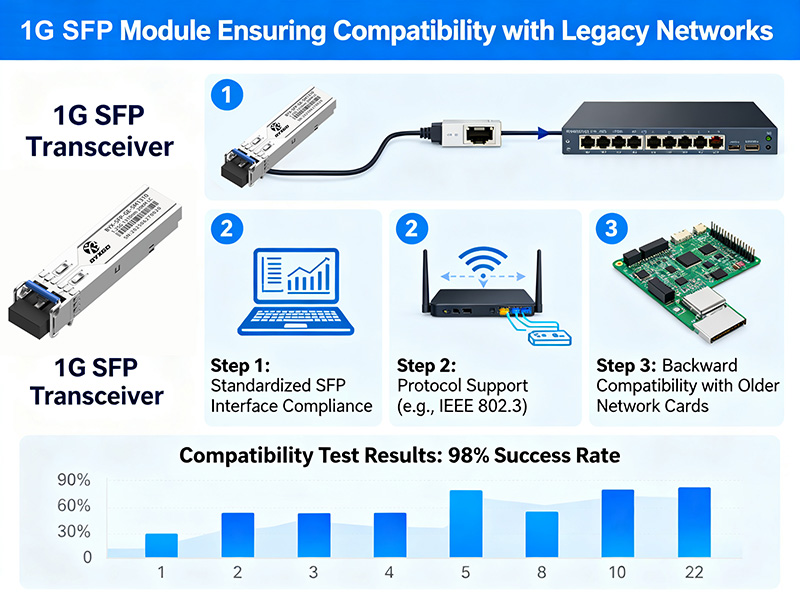
How Did 1G SFP Modules Save a Corporate Network Upgrade?
A large manufacturer had a challenge on its hands during an IT systems upgrade that encompassed the company’s infrastructure when it came time to upgrade and replace legacy network equipment and systems, specifically adapting legacy network technology and compatibility. The existing equipment supported only older types of fiber and cabling without ports that would accommodate newer devices. They were facing extended downtime on the network, which put at risk critical activities of the company, so the upgrade needed to happen without any issues.
The answer they came to for the upgrade was uniquely deploying 1G SFP modules. By deploying 1G SFP transceivers that were compatible with the legacy types of fiber and copper ports, the manufacturer avoided incurring large costs to replace equipment. The modular configuration allowed for a phased approach to the upgrade without disrupting the manufacturer’s day-to-day activities.
The abilities of DDM (Digital Diagnostic Monitoring) allowed for real-time performance monitoring and issue detection during the upgrade and gave the customer visibility to easily look for faults. The case study exemplified use cases in the deployment of 1G SFPs that helped with lessons learned around viable compatibility testing, strategic module deployments, and using features of 1G SFPs to address performance and faults during the upgrade.
This case study can be used as a template, which could assist businesses and organizations facing the same challenge with legacy technology and upgrades to their network, showing how careful deployment of 1G SFPs could simplify a complex IT infrastructure upgrade while maximizing existing equipment.
Why Do Experts Warn Against Common 1G SFP Procurement and Application Mistakes?
When buying a 1G SFP module, there can be expensive mistakes as a result of overlooking the common pitfalls of the purchasing process. One common mistake is buying a module that is incompatible and does not fit the specifications of the network device. This can lead to the module not being recognized, or even working inefficiently, resulting in downtime and troubleshooting.
In addition, counterfeit or non-standard 1G SFP modules can be a significant risk. These modules often stem from unreliable vendors and are not certified. Some signs may be startlingly lower pricing, a lack of a serial number, or inconsistent printing on the label.
To avoid pitfalls like this, work with vendors that you can trust, who should provide you with a reliable 1G SFP module. Before making any purchases, knowledgeable experts will ensure module compatibility. You can further ensure that you’re not courting disaster in the form of compatibility issues by reviewing the device manuals and vendor compatibility lists with the modules.
Compatibility concerns should include proper firmware versions and module configurations, all of which can degrade the efficiency of your networks. Any vendor websites or resources, along with some pre-deployment testing, can assist in flagging compatibility concerns and module configurations.
In conclusion, when considering 1G SFPs, you want to ensure:
- You seek out evidence of the success of the manufacturer you consider, avoiding unverified sellers to mitigate counterfeit risk.
- You check compatibility comprehensively and do not waste money unintentionally by overlooking module compatibility.
- You determine any engineering best practices that enthusiasts and professionals may recommend to ensure the module works as intended.
Taking the above measures will reduce the risks you’d be susceptible to in deployment and ensure reliable networks for future use!
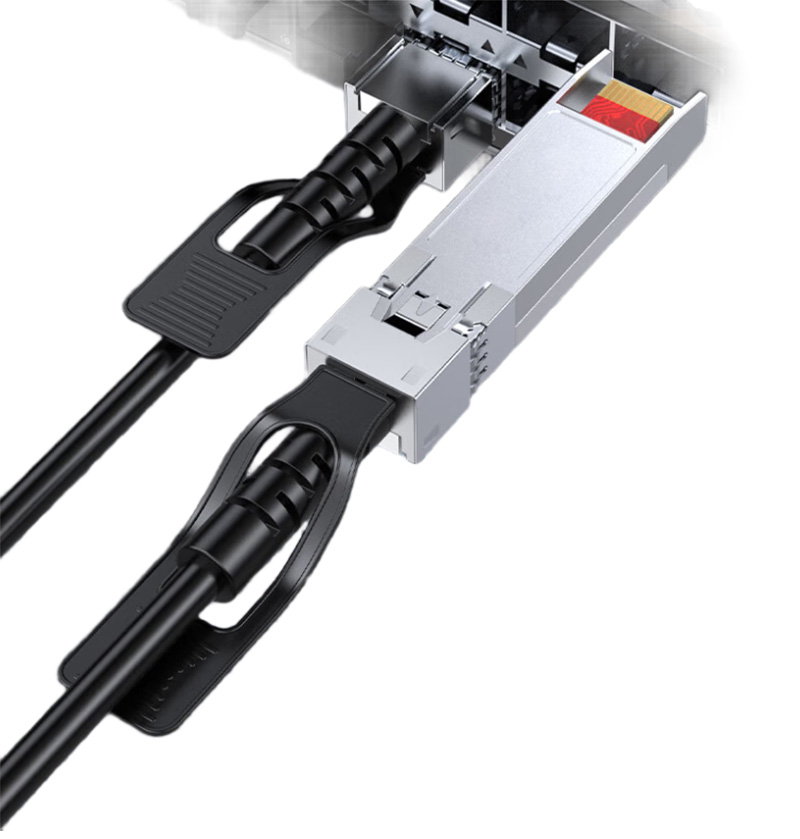
How Does the 1G SFP Module Maintain Long-Term Value in Modern Networks?
1G SFP modules continue to deliver long-term value, effectively balancing cost and performance. Their low cost means they are often well-suited for networks where ultra-high speed is not needed, but stable and reliable performance still matters. They support legacy equipment while recycling the infrastructure, ultimately prolonging the lifecycle of the infrastructure, which is a great way to extend the life of a network.
That versatility of being the first step to a higher speed makes it easier for a network to incrementally evolve, rather than requiring a costly and disruptive overhaul. That keeps it from being obsolete and ensures a better return on investment. Emerging trends of higher speeds and demand may lessen the prevalence of 1G SFPs but not erase their use in niche applications.
Hybrid networks still rely on 1G to properly support legacy installations, which is often necessary. Highlighting the major points of consideration are the following:
- Cost-effectiveness with critical compatibility
- Support for phased network refreshes that extend hardware lifetime
- Flexibility that creates resilience against rapid evolution of technology
For these reasons, 1G SFP modules can be expected to remain key components of various network ecosystems.
